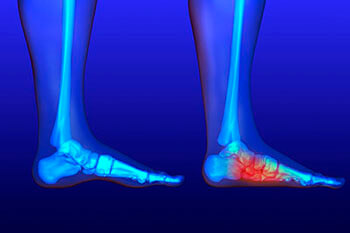
The medical term for flat feet is pes planovalgus syndrome. In flat feet, the arch collapses, the heels evert, and there is strain on the posterior tibial tendon. X-rays are necessary to determine the degree of flat feet. MRIs are ordered often to ascertain the damage on the PT tendon. In advanced stages, patients will not only complain of medial ankle pain at the PT tendon, but also lateral ankle pain at the sinus tarsi. Because the foot hyperpronates, the sinus tarsi joint is impinged, causing sinus tarsi pain. Treatments include orthotics, ankle braces, Arizona braces, cortisone injections into the sinus tarsi, stretching.
Surgical treatments include flat foot reconstruction, which Dr. Badri has obtained excellent results with.
